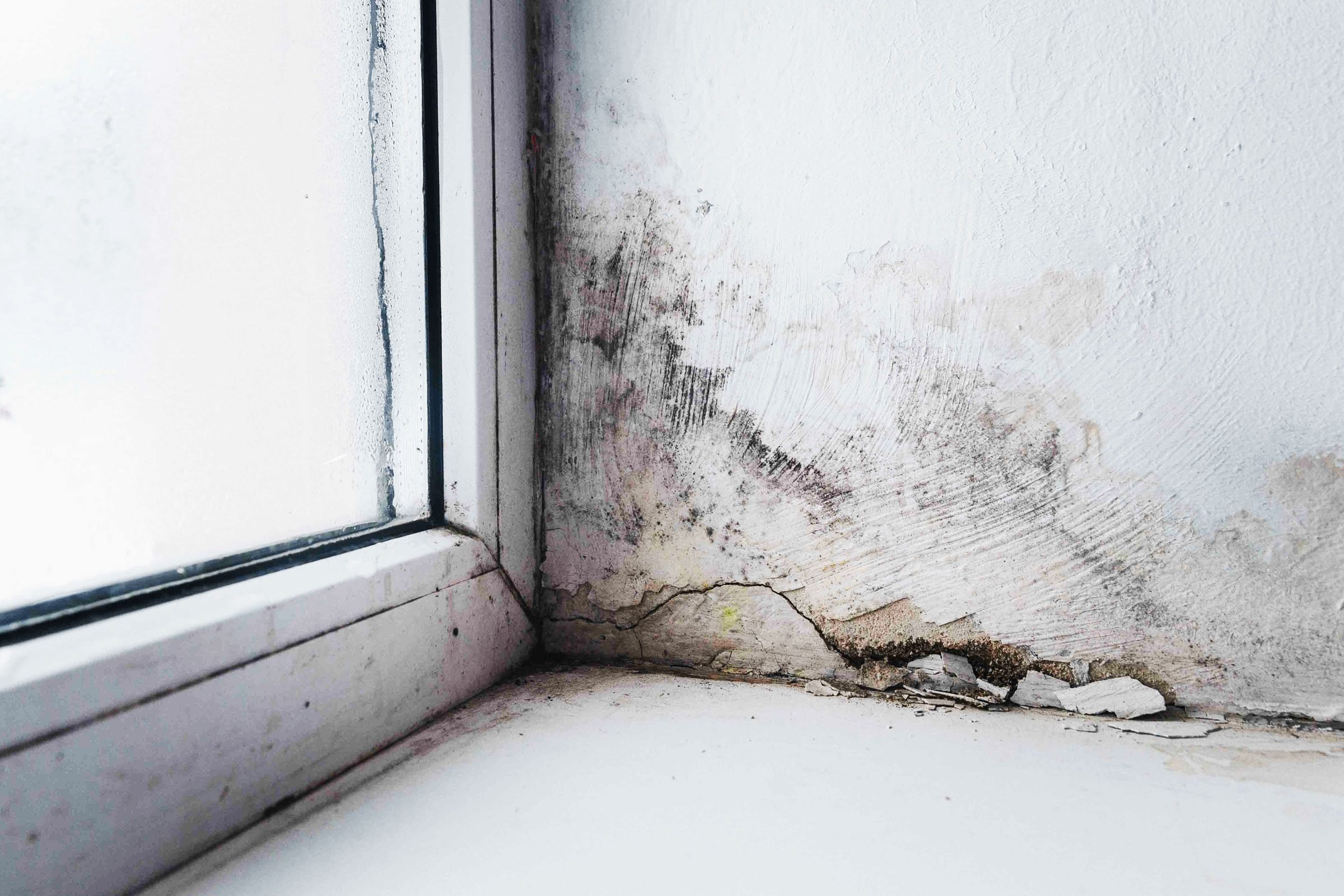Mold grows in a damp basement, but does it stay there? Can it travel to the rest of your home? An expert answers these questions and more.

Can Mold in the Basement Affect Upstairs?

Did you know mold in your basement can affect the upstairs living areas of your home? It can.
Should you be concerned? What can you do about mold in your basement? I talked with Michael Rubino, author of The Mold Medic: an Expert’s Guide on Mold Removal and founder of HomeCleanse, to answer these important questions.
Should I Worry About Mold in the Basement?
Yes. Molds can cause health problems and damage property, so it’s important to take care of it quickly. Mold colonies release microscopic spores that can be carried throughout the house on air currents, pets, people and personal belongings.
“If these spores land on a surface with a food and moisture source, they’ll also begin to grow in the new location,” says Rubino. That’s why homes with mold often have more than one area of contamination. Modern energy-efficient homes have little airflow between indoor and outdoor environments, meaning spores that end up in your living areas usually stay there.
For people sensitive to molds, Rubino says health problems from exposure include allergies and colds, migraines, chronic fatigue, skin problems and even autoimmune disorders.
“Tackling mold in the basement quickly and correctly is key to ensuring that the entire home doesn’t become an increasingly toxic environment that can trigger a long list of adverse health reactions,” he says.
Can a Damp Basement Affect Upstairs?
Yes. Even if you don’t see mold, if your basement is constantly wet or damp, a mold spore there can transition into a living colony, says Rubino. And if a colony establishes itself in your basement, spores can quickly migrate to the rest of your home.
“Mold can grow in as little as 24 to 48 hours given a source of moisture,” Rubino says. “Some species of mold can also grow in areas of high humidity.” That’s why it’s so important to take care of moisture problems as soon as you notice them.
“Removing the element needed for growth helps ensure that any spore entering a home will remain a non-living particle until it’s removed by things like air filtration and deep cleaning,” says Rubino.
Moisture mitigation, like resolving leaks and maintaining low humidity, prevents indoor mold growth.
Can Mold Travel From One Apartment To Another?
Absolutely.
“Since apartments are not standalone entities like single-building homes, there are opportunities for particles like mold spores to travel between the units,” says Rubino. “The particles in question are microscopic, allowing them to get kicked up into the indoor air and ride that current to wherever it may lead — even the next apartment over.”
You can’t control what your neighbor does, but Rubino suggests these ways to reduce the chances mold will become a problem in your unit:
- Check with your building services manager about changing your HVAC filters frequently, and upgrading to the highest Minimum Efficiency Reporting Value (MERV) rated filter.
- Deep clean often with a HEPA vacuum, botanical cleaning products and microfiber towels to remove as many particles as possible .
- Reduce moisture by maintaining humidity levels between 35% and 50%, wiping up spills, creating airflow in bathrooms and kitchens and keeping appliances dry.
- Buy an air purifier. Consider hiring a mold inspector or buying an at-home test kit like The Dust Test to see if there are high levels of contaminants.
- Check with your building manager to see what options are available to mitigate the situation. They may have a legal obligation.
Can Mold Spores Travel on Clothing?
Yes. Mold spores are microscopic and airborne. Rubino says they can easily become embedded in the fibers of our clothes and stick to our shoes as we walk through the basement. If we then go upstairs, the spores hitch a ride.
Mold spores can also get into the washing machine during the laundry, says Rubino. Once that happens, spores may colonize thanks to the moisture and food sources like dirt, detergent and fabric softeners inside. Front-loading washing machines are particularly vulnerable.
Here’s how to get rid of mold in your washing machine.
Steps To Take To Get Rid of Mold in the Basement
First, stop any leaks and moisture intrusion. This includes sealing cracks in the foundation and holes in the attic, Rubino says. If you remove mold yourself but don’t address the moisture problem, mold will return and you’ve wasted your time.
Mold colonies grow into walls and ceilings and enter voids between floors, allowing spores to reach hidden areas of your home. Even if you don’t see mold, spores may be released when you perform remediation. Always wear proper personal protective equipment (PPE) and take precautions not to contaminate other areas of your home.




















